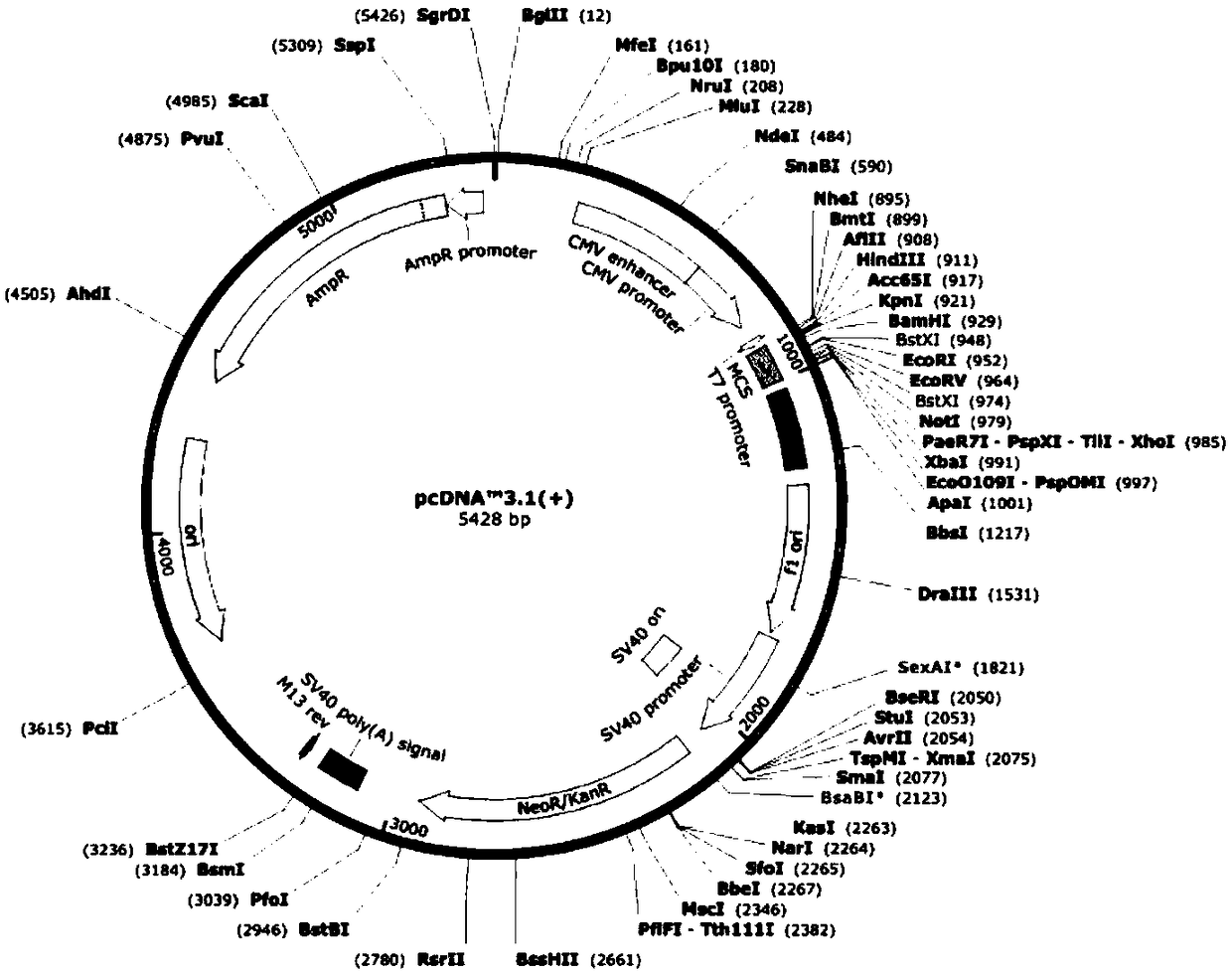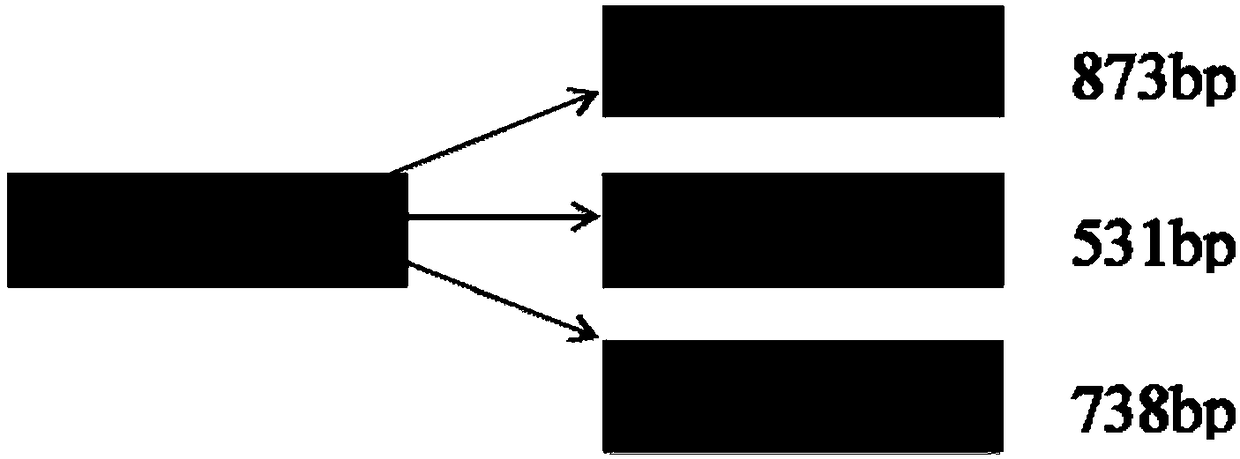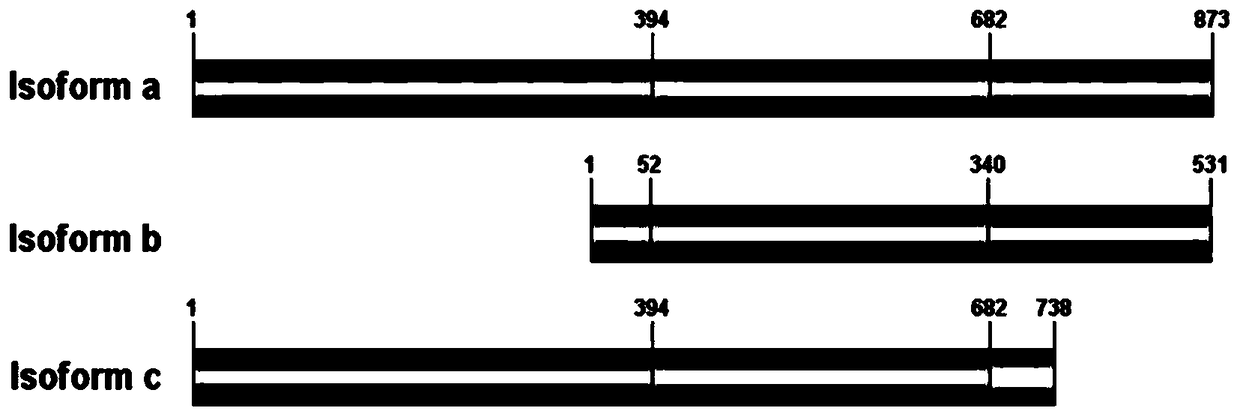Application of PD-L1 (Programmed Death-Ligand 1) spliceosome as marker B for instructing administration of PD-L1/PD1 immunotherapy
A technology of immunotherapy and splicing, which is applied in the field of biomedicine and tumor immunotherapy, and can solve the problems that no research has shown the role of cancer, and no research has shown the role and mechanism of the three splice bodies.
- Summary
- Abstract
- Description
- Claims
- Application Information
AI Technical Summary
Problems solved by technology
Method used
Image
Examples
Embodiment 1
[0159] Example 1 Analysis of the expression of PD-L1 in colorectal cancer cell lines
[0160] All colorectal cancer cell lines in the laboratory were collected for PD-L1 western bolt detection, and the results were as follows Figure 3a shown. Among them, the antibody of PD-L1 is Abcam Company: Anti-PD-L1 antibody [28-8] (ab205921). It can be seen from the figure that among the common cell lines of colorectal cancer, only RKO and RKO-MUT cell lines have PD-L1 expression. Among them, RKO-MUT cells are mutant cells of RKO cells, which are preserved by the pathology laboratory of Zhejiang University School of Medicine. The inventor promises that the cells can provide the cell line to the public free of charge within 20 years from the date of patent application.
Embodiment 2
[0161] Example 2 RNAi interferes with the expression of PD-L1 of RKO / RKO-MUT
[0162] Detection of PD-L1 expression in RNAi RKO / RKO-MUT cell lines, in which the siRNA sequences used are shown in the table below:
[0163]
[0164]
[0165] The result is as Figure 3b shown. It can be seen from the figure that after RNAi, the expression of PD-L1 in RKO / RKO-MUT cells decreased, and the expression of PD-L1 in RKO cell lines decreased more significantly than in RKO-MUT cell lines. In addition, surprisingly, the inventors observed that the band position of PD-L1 in the RKO-MUT cell line is different from that in the RKO cell line, suggesting that there may be multiple alternative splicing forms of PD-L1. After retrieval, Homo sapiens PD-L1 protein has three natural alternative splicing forms, namely isoforma / b / c, and the comparison relationship between the encoded nucleotide sequences can be seen in Figure 1, and the encoded polypeptide The sequences can be found in NCBI ac...
Embodiment 3
[0166] Example 3 RT-qPCR detection of the expression of three splice bodies in different colorectal cancer cell lines
[0167] Primers were designed in the common sequence regions of the 3 variants, and all 3 variants could be detected; primers were designed for the 3 variants, and only a specific variant could be detected. The mRNA expression of the three variants was detected by qPCR, and the primer sequences are shown in the table below:
[0168] Primer name
[0169] The result is as Figure 4 As shown, similar to the results of western-blot, only a trace amount of PD-L1 mRNA was transcribed and detected in the other colorectal cancer cell lines except for the expression of PD-L1 in the RKO and RKO-MUT cell lines. In addition, the expression of isoform b was not detected in RKO and RKO-MUT cell lines.
PUM
 Login to View More
Login to View More Abstract
Description
Claims
Application Information
 Login to View More
Login to View More - R&D
- Intellectual Property
- Life Sciences
- Materials
- Tech Scout
- Unparalleled Data Quality
- Higher Quality Content
- 60% Fewer Hallucinations
Browse by: Latest US Patents, China's latest patents, Technical Efficacy Thesaurus, Application Domain, Technology Topic, Popular Technical Reports.
© 2025 PatSnap. All rights reserved.Legal|Privacy policy|Modern Slavery Act Transparency Statement|Sitemap|About US| Contact US: help@patsnap.com



